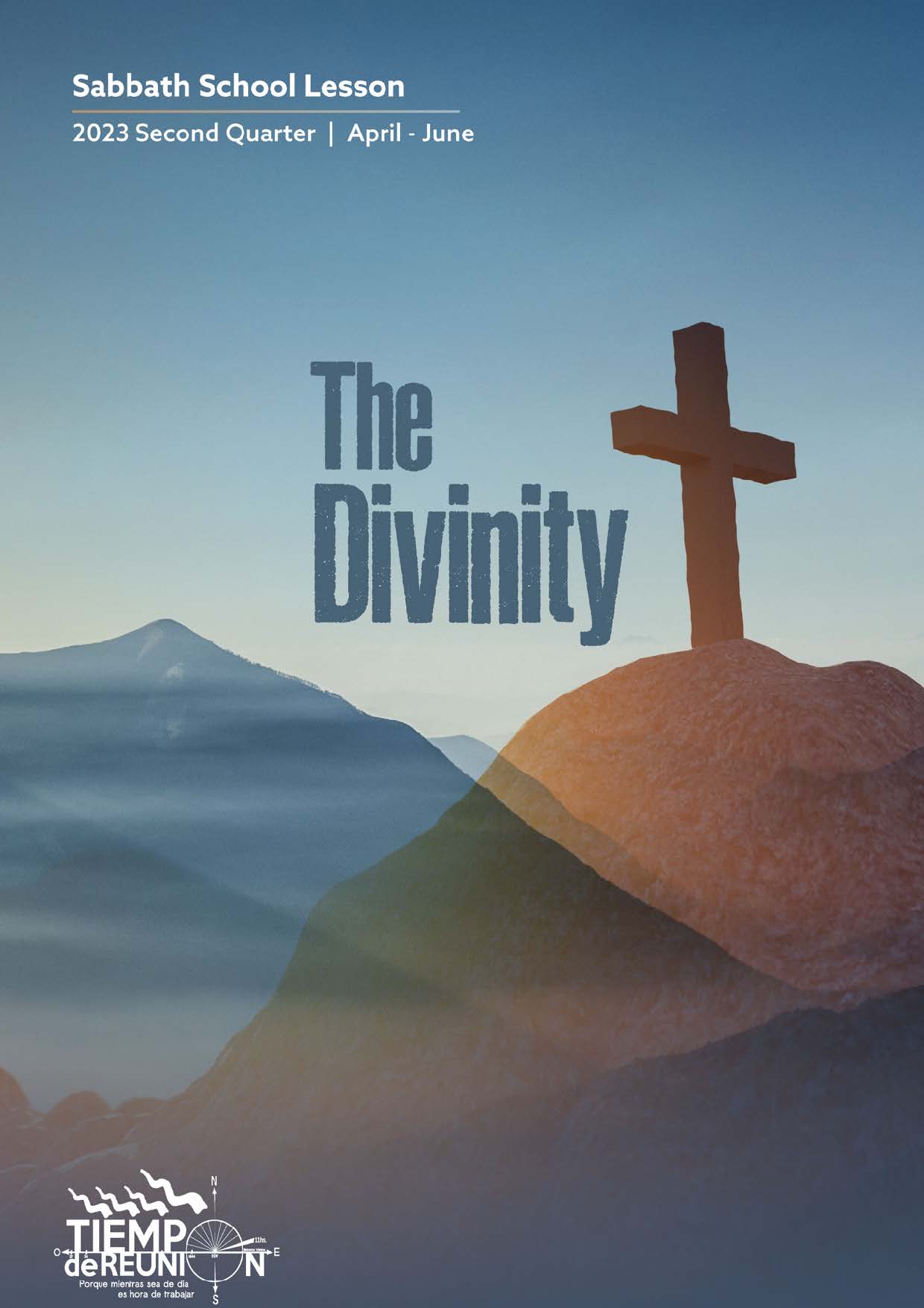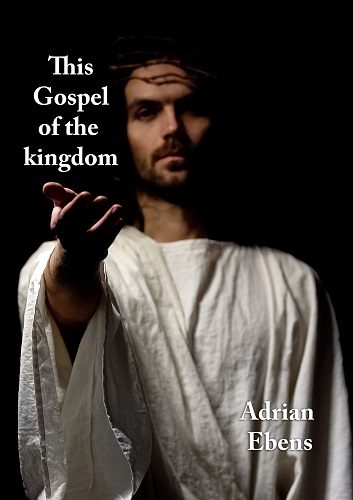14. Unmasking the Abominable Desolator
The purpose of this series is to try and draw down some practical implications of what our understanding of the Father and Son relationship does to our families, churches and communities in terms of blessing or cursing. I am trying to show that there is a world of difference between the “Son” in the Trinity and the Son of the living God as revealed in Scripture. Hopefully by now you will have the sense that every aspect of our life experience is touched and affected in some way.
In this chapter I want to explore the in close detail the transaction that is described in Daniel 7 and 8. This transaction of the coming of the Son of man to the Ancient of Days is the central pillar and foundation of Adventism. This is the source of our power for knowing what it means to enter the Most Holy Place. How we understand the central characters in this transaction will therefore filter down into every other doctrine we hold; that is of course if it is our central pillar.
The Scripture which above all others had been both the foundation and the central pillar of the advent faith was the declaration: "Unto two thousand and three hundred days; then shall the sanctuary be cleansed." Daniel 8:14. GC 409
The more real we understand this narrative the more real becomes the whole investigative judgement experience. I want to suggest to you that only the divine pattern as revealed in 1 Cor 8:6 can give real meaning to the transaction between the Ancient of Days and the Son of Man.
Let us consider parts of this narrative carefully.
Dan 7:9,10,13,14 I beheld till the thrones were cast down, and the Ancient of days did sit, whose garment was white as snow, and the hair of his head like the pure wool: his throne was like the fiery flame, and his wheels as burning fire. (10) A fiery stream issued and came forth from before him: thousand thousands ministered unto him, and ten thousand times ten thousand stood before him: the judgment was set, and the books were opened. … (13) I saw in the night visions, and, behold, one like the Son of man came with the clouds of heaven, and came to the Ancient of days, and they brought him near before him. (14) And there was given him dominion, and glory, and a kingdom, that all people, nations, and languages, should serve him: his dominion is an everlasting dominion, which shall not pass away, and his kingdom that which shall not be destroyed.
What is our perception of reality in this story? Is there a real person that is Ancient of days? Does He sit? Are His garments as white as snow? Is the hair of His head white like pure wool? Were there actual books opened? Was the Son of man actually brought in before Him?
Why am I asking all these questions? I have another question I want to ask you, but before I ask that I want to show you a difference in understanding.
I want you to read how Uriah Smith understood this. This is from Bible Student's Assistant Pages 45-46 - Uriah Smith 1858
GOD A PERSONAL BEING
PROOF. "The Father himself which hath sent me, hath borne witness of me. Ye have neither heard his VOICE at any time, nor seen HIS SHAPE." John 5:37.
"God who . . . spake in time past unto the fathers by the prophets, hath in these last days spoken unto us by his Son, . . . who being the brightness of his glory and the express IMAGE of his PERSON," etc. Heb.1:1-4.
"I beheld till the. . . . Ancient of Days did sit, whose garment was white as snow, and the HAIR of his HEAD like the pure wool." Dan.7:9.
"And (Moses) said, I beseech Thee, shew me thy glory. . . . And he said, Thou canst not see my FACE; for there shall no man see me and live. And the Lord said, Behold there is a place by me, and thou shalt stand upon a rock: and it shall come to pass while my glory passeth by, that I will put thee in a cleft of the rock, and will cover thee with my HAND while I pass by. And I will take away mine hand, and thou shalt see my BACK PARTS, but my FACE shall not be seen." Ex.33:18-23. [46] "And they heard the voice of the Lord WALKING in the garden in the cool of the day." Gen.3:8. "And they saw the God of Israel, and there was under his FEET as it were a paved work of sapphire stone." Ex.24:10.
"After the Lord had spoken unto them, he was received up into heaven, and SAT on the RIGHT HAND OF GOD." Mark 16:19. "Hast thou an ARM =like God? or canst thou thunder with a VOICE like HIM?" Job 40:9. "Out of the mouth of the Most High proceedeth not evil and good." Lam.3:38.
Now listen to James White.
James White - RH Aug 19 1858
What is God? He is a material, organized intelligence, possessing both body and parts. He is in the form of man. What is Jesus Christ? He is the Son of God, and is like his Father, being "the brightness of his Father's glory, and the express image of his person." He is a material intelligence, with body, parts and passions; possessing immortal flesh and immortal bones.
Now contrast this with:
Bible Questions Answered By DON F. NEUFELD - RH Oct 6 1977
Worthy of note is the fact that this statement makes no comment on whether the members of the Godhead have physical or material bodies. Adventists have been reticent to speculate as to this aspect of God's nature. Speaking of Him, they emphasize His attributes, such as personality, self-existence, transcendence, immutability, omniscience, omnipresence, omnipotence, holiness, and love. It’s true that in the Bible, Gods represented as having ears (Ps. 17:6), nostrils (2 Sam.22:9), a mouth (Deut. 8:3), a hand (Zech. 2:9), feet (Ps.18:9). But these are usually considered as being anthropomorphisms, that is, expressions attributing to God human characteristics. They are attempts; it is claimed, to help human beings understand God. Who is much above them?
Do you see the difference? Let us go back to the pioneers and let them explain their position a little more. Let James White set the context for us.
Our position is, that a change has taken place in the position and work of our literal High Priest in the literal Sanctuary in heaven, which is to be compared to the coming of the bridegroom in the marriage. This view is a perfect safeguard against spiritualism. We not only believe in a literal Jesus, who is a "Minister of the Sanctuary," but we also believe that the Sanctuary is literal. - And more, when John says that he saw "one like the Son of man" "in the midst of the seven candlesticks," that is, in the Holy Place, we know not how to make the candlestick spiritual, and the Son of man literal. We therefore believe that both are literal, and that John saw Jesus while a "Minister" in the Holy Place. John also had a view of another part of the Sanctuary, which view applies to the time of the sounding of the seventh angel.
…The Most Holy, containing the Ark of the ten commandments, was then opened for our Great High Priest to enter to make atonement for the cleansing of the Sanctuary. If we take the liberty to say there is not a literal Ark, containing the ten commandments in heaven, we may go only a step further and deny the literal City, and the literal Son of God. Certainly, Adventists should not choose the spiritual view, rather than the one we have presented. We see no middle ground to be taken. – The Parable Page 16
James White understood the issues at stake. He knew that if the scenes of the judgment from Daniel 7 and 8 were not literally taking place then the whole doctrine would collapse in on itself. Notice how Joseph Bates answers the next question I wish to ask and that is:
Does the Ancient of days actually give a kingdom to the Son of man?
And Daniel, the prophet, teaches the same doctrine. "I saw in the night visions: and behold, one like the Son of man came with the clouds of heaven, and came to the Ancient of days, (described in the ninth verse) and they brought him near before him; and there was given him dominion and glory, and a kingdom, never to be destroyed." Dan. 7:13,14. Now we all admit this personage was Jesus Christ; for no being on earth or in heaven, has ever had the promise of an everlasting kingdom but him. And does not the Ancient of days give it to him? Would it not be absurd to say that he gave it to himself? How then can it be said (or proved) as it is by some, that the Son is the Ancient of days; - this passage, and the one in fifth Revelations, distinctly prove God and his Son to be two persons in heaven. Jesus says, "I proceeded forth and came from God: neither came I of myself, but he sent me." John 8:42. "I come forth from the Father, and am come into the world; again, I leave the world and go to the Father.". {1846 JB, BP1 18.2} Opening of the Heavens
Can you see how the pioneers answered this question? Can you see how their rejection of the Trinity caused them to see that the Ancient of Days was exactly what that title means: Ancient of Days; and that He therefore had absolute authority to grant a kingdom to His Son.
Please do not miss this point as it reveals the secret of Adventism’s long flowing hair and is the secret of her power. The reality of the Heavenly Sanctuary, the reality of the mediatorial work of Jesus, the reality of Him receiving a kingdom all depend on a clear understanding of the distinct personalities of Father and Son. Any shift towards a metaphorical understanding because of a Trinitarian mindset and this whole system collapses. It appears as a mirage on the dusty walls of scholars minds serving only as an illustration but is not real.
It is impossible for a Trinitarian mind to actually believe that the Father is giving a literal kingdom to His Son. It can only be a symbolic gesture for the purposes of the plan of salvation and this is the desolating genius of the Trinity. It forces the mind into a metaphorical gear and then strips the mind of the realism of the Sanctuary, the Son of man and the Ancient of days. These realities are replaced with metaphorical labels that are just hung on a wall for us to admire as if we were in an art gallery.
When we believe that Jesus is the “By Whom” agent of the Father, then the whole Sanctuary narrative springs to life and finds traction in the soul as being a real event. This is why our pioneers spoke so often about the distinct personalities of Father and Son. Notice:
“Those who seek to remove the old landmarks are not holding fast; they are not remembering how they have received and heard. Those who try to bring in theories that would remove the pillars of our faith concerning the sanctuary or concerning the personality of God or of Christ, are working as blind men. They are seeking to bring in uncertainties and to set the people of God adrift without an anchor.” MR760 9.5
Can you see why Ellen White connects the doctrine of the Sanctuary to the personalities of the Father and the Son? As you read the Fundamental statement of Adventists on the Trinity do you see language of Father and Son?
2. Trinity:
There is one God: Father, Son, and Holy Spirit, a unity of three co-eternal Persons. God is immortal, all-powerful, all-knowing, above all, and ever present. He is infinite and beyond human comprehension, yet known through His self-revelation. He is forever worthy of worship, adoration, and service by the whole creation. (Deut. 6:4; Matt. 28:19; 2 Cor. 13:14; Eph. 4:4-6; 1 Peter 1:2; 1 Tim. 1:17; Rev. 14:7.)
In this statement the One God is the three persons which are then referenced as He and His. When you read the He and the His, who are you thinking about? I find this statement confusing. “He” in English refers to a singular being.
See how some of our Adventist Scholars describe this god:
We would suggest that God in His Trinitarian self-revelation, has claimed that He created us to reflect the love that supernaturally resides in His very being as an eternally loving God who is one in three. Furthermore, the triune love found in God is not self oriented and thus strongly implies that we find our greatest joy and satisfaction in living and serving others. Whidden, Moon and Reeve, The Trinity Page 247
See how the language used is “He” and “His” and combined it with Trinitarian self-revelation? Does this not make indistinct the personalities of Father and Son?
Here is the secret of Satan’s Desolation of the Heavenly Sanctuary. It comes through a merging of the Son with the Father through a Trinitarian formula of three means one. As soon as you have that formula in place, the narrative Daniel 7 and 8 is desolated.
Only the “Of Whom” and “By Whom” understanding of Father and Son allow us to keep them distinct in our minds and give life to the Daniel 7 story.




